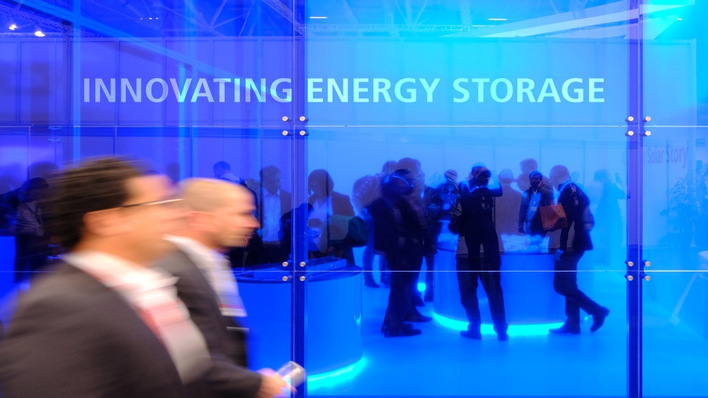Suitable catalysts are of great importance for efficient power-to-X applications – but the molecular processes occurring during their use have not yet been fully understood. Using X-rays from a synchrotron particle accelerator, scientists of the Karlsruhe Institute of Technology (KIT) have now been able to observe for the first time a catalyst during the Fischer-Tropsch reaction that facilitates the production of synthetic fuels under industrial conditions. It is intended to use the test results for the development of bespoke power-to-X catalysts. The team has published the results in the scientific journal Reaction & Chemical Engineering.
On the way to a CO2-neutral society, power-to-X processes (P2X), i.e. processes that convert renewable energy into chemical energy sources, support the interlocking of different sectors. For example, synthetic fuels can be produced from wind or solar power, enabling climate-friendly mobility and goods transport without additional greenhouse gas emissions. The Fischer-Tropsch synthesis (FTS), which is necessary for this purpose among other things, yielding long-chain hydrocarbons for the production of petrol or diesel from carbon monoxide and hydrogen, is an established process in the chemical industry. However, even though more than one hundred years have passed since the discovery of this technology, the processes involved are still not fully understood scientifically: “This applies in particular to the structural changes in the catalysts required for the process under industrial conditions,” says Professor Jan-Dierk Grunwaldt from the Institute for Chemical Technology and Polymer Chemistry (ITCP) of KIT. “During the reaction, undesirable by-products can be formed or disruptive structural changes in the catalyst can occur. So far, it has not been explained sufficiently how this happens exactly during the reaction and what the effects on the overall process are.”
Watching a catalyst at work at the atomic level
In a transdisciplinary project, in cooperation with P2X experts from the Institute for Micro Process Engineering (IMVT) and the Institute of Catalysis Research and Technology (IKFT) of KIT, the team has now achieved a breakthrough in understanding the FTS at the atomic level. “For the analysis, we use methods of synchrotron research, i.e. X-ray absorption spectroscopy and X-ray diffraction,” explains Marc-André Serrer (IKFT), one of the authors of the study. “This was the first time that we were able to watch, so to speak, an FTS catalyst at work at the atomic level under real process conditions.”
See also:
How Germany can become climate-neutral by 2050
While catalytic reactions had already been studied beforehand with a synchrotron, a special particle accelerator for generating particularly intense X-ray radiation, reactions that take place over a long period of time and at high temperatures and pressures, as in real-time operation at a P2X facility, have so far presented an obstacle. For the experiment at KIT, a novel high-pressure infrastructure has now been added to the CAT-ACT measuring line (CATalysis and ACTinide measuring line) designated for catalyst studies at the KIT synchrotron. With this infrastructure – which was built as part of the German Federal government's Kopernikus projects for the energy turnaround – it was possible to determine the function of a commercial cobalt-nickel catalyst operando at 250 °C and 30 bar for more than 300 hours during the FTS. This was also the first time that a sufficient quantity of hydrocarbons could be produced in such an experiment that could be analysed afterwards.
Catalyst development at the computer
The experiment allowed the scientists to identify hydrocarbon deposits that hinder the diffusion of the reactive gases towards the active catalyst particles. “In the next step, these insights can be used to protect the catalyst specifically against these deactivation mechanisms,” says Grunwaldt. “This is done, for example, by modifying the catalyst with promoters, i.e. substances that improve the properties of the catalyst.” In the future, the novel atomic understanding of catalytic reactions will contribute to computer simulations for a fast, resource-saving and cost-effective development of bespoke catalysts for P2X processes. (mfo)
Here you can access the publication in Reaction & Chemical Engineering.







